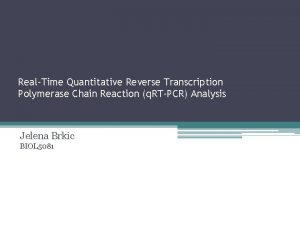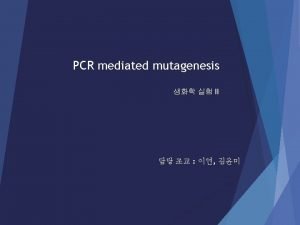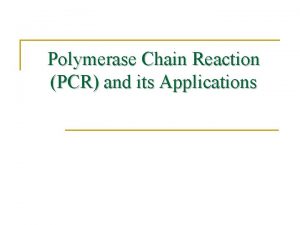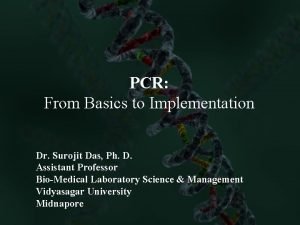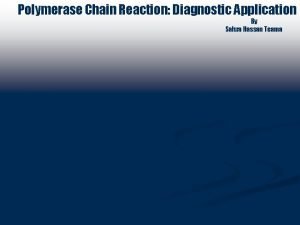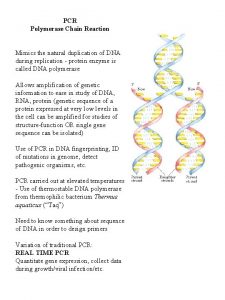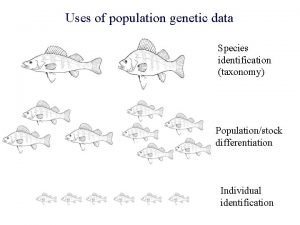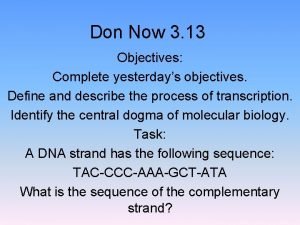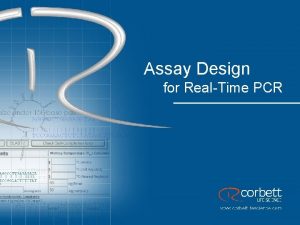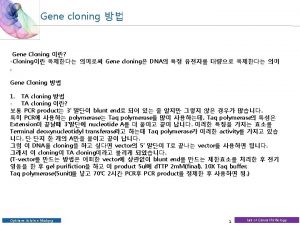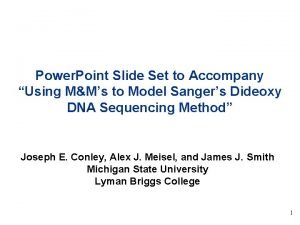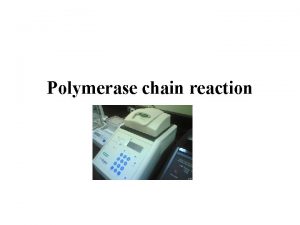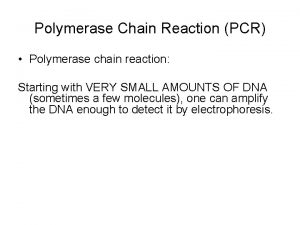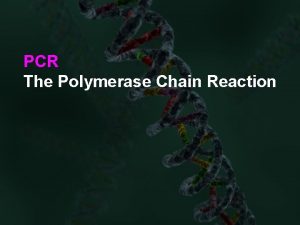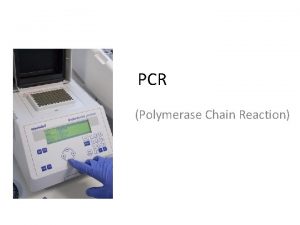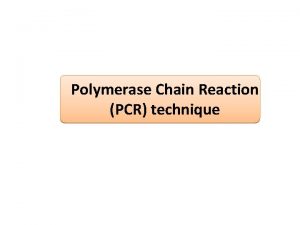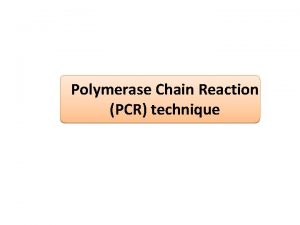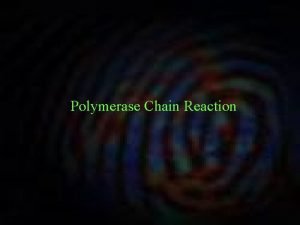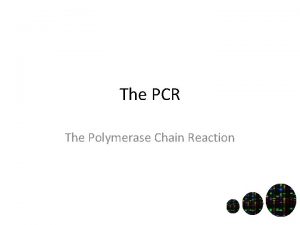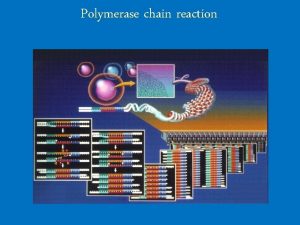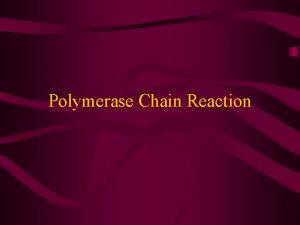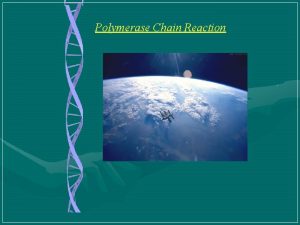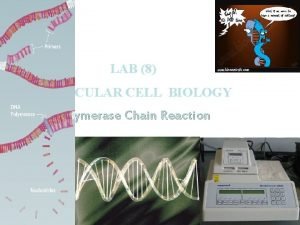POLYMERASE CHAIN REACTION What is Polymerase chain reaction


















- Slides: 18

POLYMERASE CHAIN REACTION

What is Polymerase chain reaction? (PCR) PCR is a technique that is used to amplify one sample of DNA thousands of times over to create a large enough DNA sample for extensive analysis. i. e. each time a PCR cycle is performed the total amount of DNA is doubled. It is In Vitro amplification of DNA.

What are some uses of PCR? PCR can be used for many applications 1) Paternity Tests – The child’s tandem repeats are compared to the mother’s and the father’s. 2) Detecting mutations- Comparing one persons DNA to the DNA of the person with the mutation

The use of PCR in forensics To create enough DNA from a small sample to create a DNA profile.

What is needed? The DNA fragment to be copied DNA polymerase – for PCR it is taken from bacteria that live in hot springs so it is tolerent to heat Primers – short pieces of DNA that bind to the start of each end of fragment – also help to prevent both ends from joining back up

Primers in excess The annealing reaction is very efficient because the primers are "in excess" in the reaction. In a typical PCR reaction, 10, 000 molecules of a template may be used, which is 1. 6 x 10 -20 moles (0. 016 attomoles). On the other hand, 5 picomoles of each primer may be used (5 x 10 -12 moles) -- that is a 3 x 108 fold excess.

What is needed? The DNA fragment to be copied DNA polymerase – for PCR it is taken from bacteria that live in hot springs so it is tolerent to heat Primers – short pieces of DNA that bind to the start of each end of fragment – also help to prevent both ends from joining back up Nucleotides Thermocycler – a computer controlled machine that varies temperatures precisely for set time periods


Biorad – PCR song (find on youtube)

The process of PCR Step 1: Denature the DNA “Denature” means to separate the DNA strands into 2 separate strands This involves heating the DNA sample up to 96 degrees!

The process of PCR Step 2: Anneal the DNA - “annealing” means to add In this step 2 primers are added to the 2 separated DNA strands. ( 1 on each strand) The temperature is “cooled” to 65 degrees, this help the primers bind to the DNA. The primer is an attachment that signals to a polymerase where to start synthesising (making) new DNA

The process of PCR Step 3: “Extension” of DNA- New DNA Created 2 Polymerase molecules attach to the 2 Primers on the 2 DNA strands and move along the strand. As they move along they create new “complementary” DNA. Temperature goes up to 72 degrees

The process of PCR Done! By heating the DNA to separate it into 2 strands (Denaturation) Cooling the DNA to add 1 primer to each of the 2 DNA strands (Annealing) And by Adding 1 polymerase to each strand to synthesise DNA from where the primer attached (Extension) You just doubled the mount of DNA present.


Animation http: //www. dnalc. org/resources/animations/p cr. html

Making more DNA Every time you do a Cycle of PCR you double the DNA. You can do this process as many times as needed to create millions of strands of DNA. Cycle Number DNA copies None 2 1 st cycle 4 2 nd cycle 8 3 rd cycle 16

Now complete these questions When you finish you can use the computer room to run through a simulation PCR simulation http: //learn. genetics. utah. edu/content/labs/pcr/

PCR simulation http: //learn. genetics. utah. edu/content/labs/pcr/
 Polymerase chain reaction
Polymerase chain reaction The three steps of polymerase chain reaction
The three steps of polymerase chain reaction Polymerase chain reaction application
Polymerase chain reaction application Polymerase chain reaction applications
Polymerase chain reaction applications Pcr phases
Pcr phases Polymerase chain reaction
Polymerase chain reaction Polymerase chain reaction
Polymerase chain reaction Food chain sequence
Food chain sequence Dna polymerase proofreading
Dna polymerase proofreading Adn polymérase
Adn polymérase Types of dna polymerase in eukaryotes
Types of dna polymerase in eukaryotes Template strand, new strand, base pair, and dna polymerase.
Template strand, new strand, base pair, and dna polymerase. Taqman gene expression assay
Taqman gene expression assay Dna prokaryot
Dna prokaryot Taq polymerase
Taq polymerase Dna polymerase
Dna polymerase Types of dna polymerase in eukaryotes
Types of dna polymerase in eukaryotes Rna polymerase
Rna polymerase Replication
Replication
